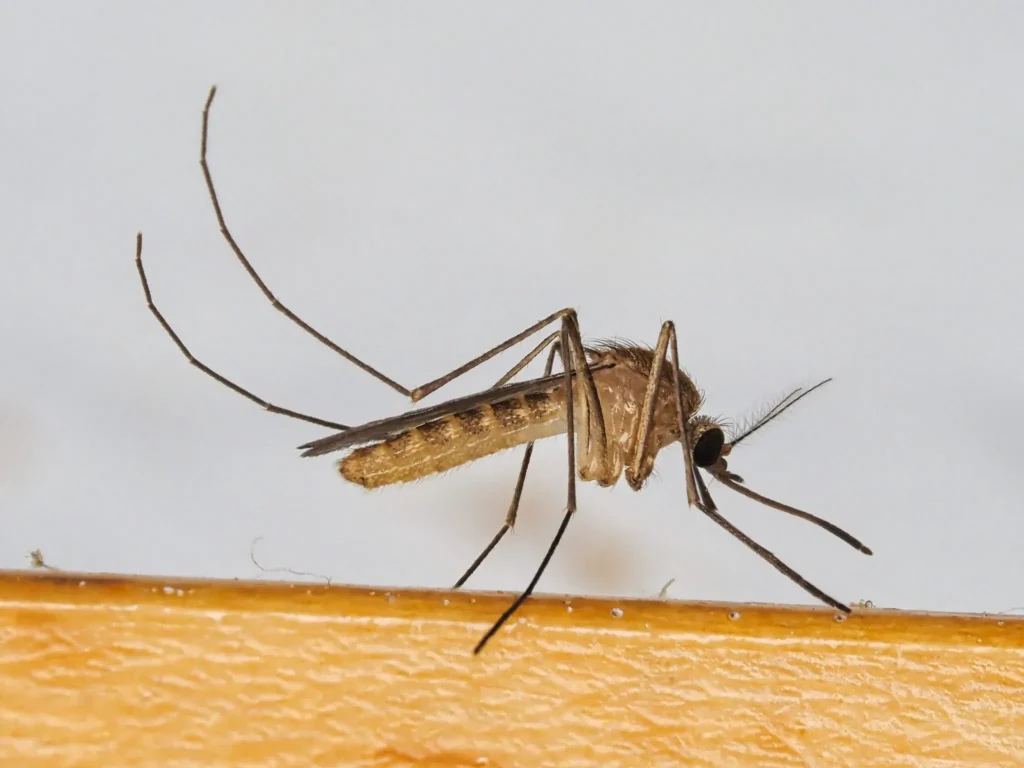The recent surge in the West Nile virus outbreak has raised alarms across Minnesota, with health officials recording one of the highest mosquito populations carrying this virus to date. July has seen increased warnings, as mosquitoes, particularly Culex tarsalis, have tested positive in all seven counties surrounding the Minneapolis-Saint Paul area. The Metropolitan Mosquito Control District (MMCD) reported a startling positivity rate of over 25%, highlighting the urgent need for effective mosquito control measures. Citizens are advised to stay indoors during dusk and dawn to minimize the risk of mosquito bites, which can lead to severe West Nile virus symptoms, including potential brain inflammation. As we navigate this concerning season, understanding the virus and implementing preventative strategies is more important than ever.
In the wake of the ongoing crisis surrounding the West Nile virus, public health officials are focusing on combating mosquito infestations that have spiked significantly across Minnesota. The blood-sucking vectors responsible for this outbreak, particularly the Culex tarsalis species, are presenting new challenges as they proliferate. Authorities are urging residents to remain vigilant, especially during peak mosquito activity times, to reduce the risk of mosquito-borne diseases. Residents are also encouraged to adopt thorough mosquito control measures and actively work on preventing mosquito bites by eliminating stagnant water sources around their properties. With increasing reports of West Nile virus cases, staying informed about symptoms and effective prevention strategies has never been more critical.
Understanding the West Nile Virus Outbreak in Minnesota
In July, Minnesota faced one of its most significant West Nile virus outbreaks, raising alarms among health officials and residents alike. The mosquito populations in the Minneapolis-Saint Paul metropolitan area surged, with the Metropolitan Mosquito Control District (MMCD) reporting that nearly 200 mosquito pools were tested, and over 25% of those pools returned positive for the virus. This unprecedented rise in Culex tarsalis mosquitoes, the primary vector for the West Nile virus, drew immediate attention and prompted public warnings to minimize outdoor activity during peak mosquito hours.
The implications of this outbreak extend beyond just the immediate health risks posed by the virus. Past outbreaks have shown that high mosquito activity can lead to alarming infection rates and increased hospitalizations among vulnerable populations. Consequently, residents are advised to remain vigilant, utilize mosquito control measures, and stay informed about the latest health updates as the situation continues to evolve.
Culex Tarsalis Mosquitoes: The Main Carrier of West Nile Virus
Culex tarsalis mosquitoes are known as the primary carriers of the West Nile virus, playing a critical role in its transmission cycle. As breeding increases in favorable conditions, these mosquitoes can reach alarming numbers, contributing to the rising incidence of infections during peak seasons. The recent testing conducted by MMCD indicated that these mosquitoes were present in unprecedented quantities, raising concerns about the potential for widespread transmission of the virus in metropolitan areas.
Understanding the biology and behavior of Culex tarsalis mosquitoes is essential for effective mosquito control. These mosquitoes are particularly active during dusk and dawn, making it crucial for residents to take preventive measures during these times. By targeting the habitats where these mosquitoes breed and implementing comprehensive mosquito control measures, cities can mitigate the risk of future outbreaks and protect their populations from the adverse health effects associated with the West Nile virus.
Recognizing West Nile Virus Symptoms and Health Risks
Most individuals who contract the West Nile virus experience mild symptoms or may not show any signs at all. However, healthcare professionals emphasize the importance of recognizing the signs associated with more severe cases, such as fever, headaches, and muscle weakness, which can lead to conditions as serious as encephalitis. The Minnesota Department of Health (MDH) underscores the need for awareness, especially among older adults or individuals with preexisting medical conditions that could heighten their risk.
As the current outbreak intensifies, education on West Nile virus symptoms becomes vital. Awareness campaigns by local health departments aim to inform communities about what to look out for and when to seek medical attention. It is essential that individuals understand that while most cases are mild, early detection and intervention can significantly improve outcomes for those at risk of severe complications from this mosquito-borne illness.
Effective Mosquito Control Measures in Response to Outbreaks
In response to the current West Nile virus outbreak, health officials stress the importance of implementing effective mosquito control measures. This includes regular inspections and treatments for standing water, which serve as breeding habitats for mosquitoes. Public awareness campaigns encourage residents to eliminate stagnant water in their surroundings and to use repellents containing DEET when outdoors, particularly during dawn and dusk when mosquitoes are most active.
In addition to personal precautions, communities are encouraged to engage in cooperative mosquito management strategies. This can involve aerial spraying of insecticides in heavily infested areas and organizing neighborhood clean-ups to further minimize potential breeding sites. By working together, communities can significantly reduce mosquito populations and lower the risk of contracting the West Nile virus, helping to protect public health during peak transmission periods.
Preventing Mosquito Bites: Best Practices for Residents
As the threat of West Nile virus looms, preventing mosquito bites becomes a priority for residents in infected areas. Public health authorities recommend several best practices to minimize exposure, including wearing long-sleeved clothing and avoiding outdoor activities during peak mosquito hours. In addition, the use of EPA-registered insect repellents is highly encouraged. When applied correctly, these repellents can create a barrier against mosquitoes and decrease the likelihood of bites.
Incorporating preventive measures into daily routines can drastically reduce the risk of mosquito bites. Keeping doors and windows properly screened and using air conditioning when possible can help limit indoor mosquito entry. Additionally, educating friends and family about these practices fosters a community-wide approach to reducing mosquito populations and ultimately helps safeguard against the West Nile virus.
The Role of Local Health Departments in Outbreak Management
Local health departments play a crucial role in managing West Nile virus outbreaks by monitoring mosquito populations and providing timely information to residents. They conduct regular testing of mosquito pools and analyze data to track the spread of the virus, which is essential for effective public health responses. By coordinating with agencies like the Metropolitan Mosquito Control District, they help to implement targeted intervention strategies that address mosquito breeding sites and protect community health.
In addition to surveillance and control measures, these agencies are responsible for educating the public about risks associated with the West Nile virus and the importance of prevention. During outbreaks, health departments ramp up communication efforts through social media, press releases, and public service announcements to ensure that everyone is aware of the threats and the steps they can take to protect themselves.
Regional Comparisons: West Nile Virus Across State Lines
Minnesota is not alone in facing the challenges posed by the West Nile virus, as various states across the U.S. report similar outbreaks. States like Georgia have also seen positive samples confirmed in mosquitoes, leading to increased concern and public health interventions. In Atlanta, local officials have mobilized efforts to coordinate insect control and encourage residents to take preventive actions against mosquito bites, similar to the directives issued in Minnesota.
These comparisons highlight the importance of regional collaboration in managing mosquito-borne diseases. Effective sharing of data and best practices between states can enhance overall responses and help mitigate outbreaks before they escalate. Public health officials emphasize the need for a united front in combating the West Nile virus, recognizing that actions taken in one area can significantly impact neighboring regions.
The Historical Context of West Nile Virus in the United States
West Nile virus made its first appearance in the United States during 1999, originating from a similar outbreak in Africa and Europe. Since then, the virus has spread across the country, resulting in thousands of cases and numerous hospitalizations. The initial outbreak in New York saw approximately 60 individuals hospitalized with severe symptoms, setting a precedent for the impact of the virus on public health.
Over the years, understanding the virus’s transmission dynamics has led to advancements in monitoring and prevention strategies. With the ongoing occurrence of West Nile virus outbreaks, historical data continues to inform current public health efforts, allowing for more robust responses to future outbreaks and increased public awareness regarding the risks associated with mosquito-borne diseases.
Community Involvement in Combating Mosquito Infestations
Community involvement is pivotal in the fight against mosquito infestations and the prevention of West Nile virus transmission. Residents are encouraged to actively participate in neighborhood clean-ups and mosquito management initiatives, helping to eliminate standing water and reduce breeding sites. This collective effort not only fosters a sense of community but also significantly contributes to public health efforts.
Furthermore, local initiatives can be enhanced through educational workshops that teach residents about the importance of mosquito control measures. Engaging community members in discussions about preventing mosquito bites empowers them to take more proactive approaches. By promoting awareness and communal action, neighborhoods can create a less favorable environment for mosquitoes, ultimately leading to decreased transmission rates of West Nile virus.
Frequently Asked Questions
What measures are being taken regarding the West Nile virus outbreak in Minnesota?
Authorities have issued Minnesota mosquito warnings due to a significant increase in Culex tarsalis mosquitoes carrying the West Nile virus. Residents are advised to stay indoors at dawn and dusk when mosquitoes are most active, and mosquito control measures are being implemented to manage the populations.
What are the common symptoms of West Nile virus that may arise during an outbreak?
During a West Nile virus outbreak, most individuals may not show any symptoms, while some could experience mild symptoms like fever, headache, and body aches. In severe cases, it can lead to encephalitis or meningitis, particularly in older adults or those with weakened immune systems.
How can I protect myself from mosquito bites amid the West Nile virus outbreak?
Preventing mosquito bites is crucial during the West Nile virus outbreak. Use insect repellent containing DEET, wear long sleeves and pants, and avoid outdoor activities during peak mosquito activity times, especially at dusk and dawn.
What types of mosquitoes are primarily responsible for the West Nile virus outbreak?
The Culex tarsalis mosquitoes are primarily responsible for the West Nile virus outbreak in Minnesota. They have shown significant activity this season, leading to higher rates of virus positivity in recent mosquito pools tested.
What should residents do to help reduce the risk of a West Nile virus outbreak?
To help mitigate the risk of a West Nile virus outbreak, residents should eliminate standing water around their homes, which serves as breeding grounds for mosquitoes. Additionally, staying informed about mosquito control measures and local health advisories will aid in reducing exposure.
How has the West Nile virus spread in the United States now that an outbreak is occurring?
The West Nile virus outbreak has spread across various states, including Minnesota and Georgia, where positive cases have been detected in populations of Culex tarsalis mosquitoes. Historical data shows the virus was first identified in the U.S. in 1999, fostering ongoing efforts to monitor and manage its spread amidst increasing mosquito populations.
What is the positivity rate of Culex tarsalis mosquitoes for the West Nile virus in Minnesota?
Recent testing from mosquito pools in Minnesota revealed a positivity rate of over 25% for the West Nile virus, with 34 out of 133 pools testing positive. This figure is notably high for July, indicating a concerning outbreak.
| Key Points |
|---|
| West Nile virus outbreak in Minnesota heightened in July 2023. |
| Record numbers of mosquitoes carrying the virus reported in all seven counties of the Minneapolis-Saint Paul metropolitan area. |
| MMCD tested nearly 200 mosquito pools; 34 tested positive, yielding a positivity rate of over 25%. |
| Culex tarsalis mosquitoes are primarily responsible for spreading the virus and were found in high numbers. |
| Positive samples reported in other states like Georgia, with officials advising on mosquito control measures. |
| Most individuals either do not exhibit symptoms or have mild symptoms, but severe cases can occur, especially among older adults. |
Summary
The West Nile virus outbreak has reached critical levels in Minnesota, prompting health authorities to issue warnings to the public. With an alarming increase in the population of the virus-carrying mosquitoes, residents are urged to take preventive measures to protect themselves. Although the majority of those infected experience mild symptoms, the potential for serious illness remains, particularly for vulnerable populations. Staying informed and vigilant during this outbreak is essential to mitigate further risks.



